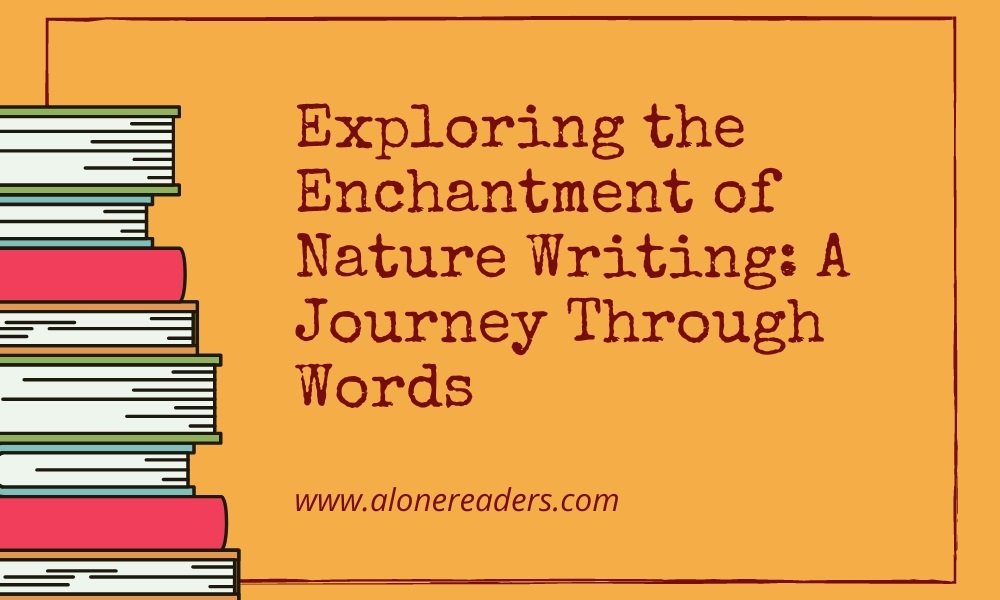
Nature writing, a genre that delicately merges the intricacies of the natural world with the personal perceptions of the writer, serves as a profound medium for exploring the interconnectedness of humans and nature. This form of literature not only celebrates the beauty and complexity of the environment but also raises awareness about its fragility and the urgent need for conservation.
The appeal of nature writing lies in its ability to transform the commonplace into the extraordinary. Through the lens of the writer, a simple forest trail becomes a vibrant ecosystem teeming with life, each organism playing a critical role in the tapestry of nature. The genre's beauty is found in these detailed observations, where writers like Henry David Thoreau in "Walden" or Annie Dillard in "Pilgrim at Tinker Creek" delve into the minutiae of their surroundings, inviting readers to step off the beaten path and appreciate the nuanced interactions of the natural world.
Nature writing is not just about the description of landscapes and wildlife; it's also a reflection on human life and how it is deeply entwined with the environment. Writers use their experiences in nature as a backdrop for broader philosophical questions, pondering humanity's place within the ecosystem and our impact on it. This introspection invites readers to consider their own relationship with the environment and encourages a deeper respect and responsibility towards it.
Moreover, nature writing serves as an important historical record, preserving details of ecological and geographical conditions that may change over time due to climate change, urbanization, and other human activities. Classic works provide insight into environments that might be vastly different today, serving as a benchmark for environmental changes and a tool for scientists and conservationists.
The genre also promotes environmental awareness and advocacy. By exposing readers to the beauty and complexity of nature, these writings inspire a connection to the environment that goes beyond the aesthetic. They stir an emotional response that can lead to action, such as supporting conservation efforts or engaging in community environmental initiatives. Rachel Carson's "Silent Spring" is a seminal example, credited with launching the contemporary environmental movement by highlighting the dangers of pesticides to wildlife and human health.
The sensory richness of nature writing also offers a form of escapism. In a world increasingly dominated by technology and urban settings, narratives that transport readers to remote wildernesses or lush forests provide a welcome respite. They allow readers to experience places they might never visit and appreciate landscapes they may never see firsthand. This vicarious exploration can enrich a reader’s understanding of the world and their appreciation for its diverse habitats.
Furthermore, nature writing is a versatile genre that spans essays, poetry, and fiction, each offering different avenues for exploring the natural world. Poetic forms often capture the emotive essence of a landscape, using vivid imagery and rhythm to convey the visceral sensations of being in nature. Fiction, on the other hand, can weave nature into its narratives, using it to drive plots or develop characters, making the setting an integral part of the story.
The educational value of nature writing cannot be overstated. For young readers, stories and books that focus on nature help cultivate a sense of wonder and curiosity about the environment. Educational programs that incorporate nature writing can enhance outdoor experiences, making learning interactive and engaging. By reading about different ecosystems and species, children gain a broader understanding of biodiversity and the importance of environmental stewardship.
In contemporary times, nature writing has embraced new challenges and themes, reflecting global concerns about climate change, biodiversity loss, and sustainability. Modern nature writers are not just recounting the beauty of nature but are also chronicling the crises facing it. Their works are calls to action, designed to shake the collective conscience and inspire meaningful changes in how we interact with our planet.
Despite its many forms and functions, the core of nature writing remains its ability to enchant and enlighten. It is a celebration of the natural world, a plea for its protection, and a bridge between the reader and the vast, wild landscapes outside their windows. Whether through a poem, an essay, or a novel, nature writing continues to be a vital, compelling tool for understanding and preserving the world we inhabit. Through these words, we find a map to ourselves and a blueprint for coexistence with the environment.